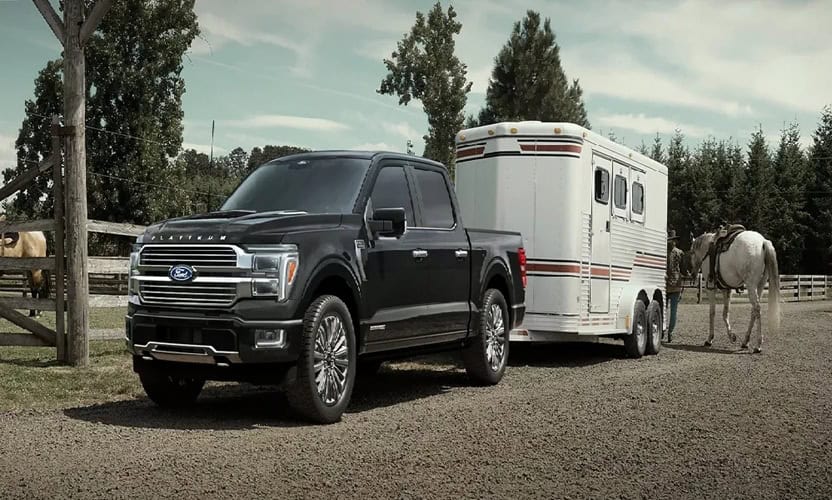The Ford Bronco, a rugged and capable off-road vehicle, has gained significant popularity among outdoor enthusiasts and everyday drivers alike. When it comes to maintaining these vehicles in cold climate regions, questions often arise about specific maintenance requirements, particularly regarding valve adjustments.

Types of Valve Systems in Ford Broncos
Ford Broncos have featured different valve systems throughout their production history, which directly impacts maintenance requirements. Understanding which system your Bronco uses is crucial for proper maintenance:
Hydraulic Lifter Systems: Modern Broncos, including the reintroduced 2021+ models and later generations of the classic Bronco (typically 1978 and newer), use hydraulic lifters. These self-adjusting systems automatically maintain proper valve clearance during operation.
Mechanical (Solid) Lifter Systems: Earlier Bronco models, particularly those from the first generation with inline-six engines like the 170ci and 200ci, used mechanical lifters that require periodic manual adjustment to maintain proper valve clearance.
Hydraulic Roller Lifters: Found in newer Bronco models with more advanced engines, these combine the self-adjusting benefits of hydraulic lifters with the reduced friction of roller designs, offering improved performance and longevity.
Cold Weather Effects on Valve Operation
Cold temperatures can significantly impact how valve systems function, particularly during engine startup and initial operation:
Oil Viscosity Changes: In cold weather, engine oil becomes thicker and flows more slowly. This affects hydraulic lifter operation, as these components rely on oil pressure to maintain proper valve clearance. When oil is cold and thick, it takes longer to reach all engine components, including the valve train.
Thermal Contraction: Metal components contract in cold temperatures, which can temporarily alter clearances throughout the engine. As the engine warms to operating temperature, these clearances normalize.
Hydraulic Lifter Bleed-Down: Hydraulic lifters may experience increased “bleed-down” (loss of hydraulic pressure) when left in extremely cold temperatures overnight, resulting in increased valve train noise upon startup until the oil pressure is restored.
Do Hydraulic Lifter Systems Need Adjustment?
For Broncos equipped with hydraulic lifters (most models from 1978 onward, including all current-generation Broncos), valve adjustment is generally not required regardless of climate:
Self-Adjusting Design: The primary advantage of hydraulic lifters is their ability to automatically maintain proper valve clearance. The internal hydraulic mechanism compensates for wear and thermal expansion/contraction.
Cold Weather Considerations: While cold weather may temporarily affect hydraulic lifter performance during startup, this does not necessitate adjustment. The system will function properly once operating temperature is reached and oil pressure is established.
Startup Noise: Increased valve train noise during cold starts in winter is normal and typically subsides as the engine warms up. This noise results from temporarily inadequate oil pressure in the lifters, not from a need for adjustment.
Mechanical Lifter Adjustment in Cold Climates
For vintage Broncos with mechanical (solid) lifters, climate considerations become more relevant:
Seasonal Adjustment Recommendations: Some experienced mechanics recommend slightly looser valve adjustments (approximately 0.001″ additional clearance) for winter operation in extremely cold climates. This accommodates the thermal contraction of engine components during cold weather.
Standard Adjustment Specifications: For most climates, following the standard Ford specifications is sufficient:
- Intake valves: 0.014″ (0.36 mm) clearance
- Exhaust valves: 0.016″ (0.41 mm) clearance
Adjustment Frequency: In regions with extreme seasonal temperature variations, some owners opt to perform valve adjustments twice a year—once before winter with slightly increased clearance and again in spring with standard clearance.
Cold Weather Startup Practices
Proper startup procedures can significantly reduce valve train stress in cold weather, regardless of the type of valve system:
Allow Adequate Warm-Up Time: In extremely cold conditions, allow the engine to idle for 1-2 minutes before starting to drive. This allows oil to circulate through the valve train and establish the proper pressure in the hydraulic lifters.
Avoid High RPM Until Warm: Keep engine speeds moderate until normal operating temperature is reached. This reduces stress on the valve train while oil is still cold and thick.
Block Heater Benefits: For Broncos operated in extremely cold regions (below -20°C), an engine block heater can significantly improve cold-weather starting and reduce valve train wear by pre-warming the oil.
Oil Selection: Using the appropriate winter-grade oil (typically 5W-30 for modern Broncos or 5W-20 as specified in the owner’s manual) ensures better cold-flow properties and faster oil pressure establishment.
How to Diagnose Cold-Weather Valve Issues
Certain symptoms may indicate valve-related issues that are exacerbated by cold weather:
Persistent Ticking Noise: While some valve train noise during cold startup is normal, noise that persists after the engine reaches operating temperature may indicate a problem with lifters, pushrods, or other valve train components.
Performance Issues: Rough idle, hesitation, or power loss that occurs primarily in cold weather could indicate valve-related problems, though these symptoms can also stem from other cold-weather issues like fuel system problems.
Excessive Oil Consumption: Valve seal deterioration can be worsened by cold weather operation, leading to increased oil consumption as the engine warms up.
Five Facts About Bronco Valve Systems
- The hydraulic lifters in modern Broncos contain tiny check valves and plungers that operate on principles similar to those of hydraulic brake systems, utilizing oil pressure instead of brake fluid.
- The Ford 2.3L EcoBoost engine in the current Bronco uses a dual overhead cam design with hydraulic lash adjusters that can compensate for up to 0.5mm of valve train wear over the engine’s lifetime.
- The original 1966 Bronco 170ci inline-six engine featured mechanical lifters that required adjustment every 12,000 kilometres, regardless of climate.
- Modern Bronco engines utilize variable valve timing systems that can adjust valve operation according to temperature conditions, thereby optimizing performance in cold weather.
- The valve covers on the 2.7L EcoBoost V6 Bronco engine contain integrated oil separators that help prevent valve train issues caused by oil contamination, a particular concern in cold-start conditions.
Questions and Answers About the Ford Bronco
Why does my Bronco make more valve noise in winter mornings than during summer?
- Cold oil takes longer to reach proper pressure and viscosity in winter. Hydraulic lifters depend on oil pressure to maintain zero valve clearance, so until the oil warms up and fully pressurizes the system, you’ll hear more valve train noise. This is normal and doesn’t indicate a need for adjustment. Using a synthetic oil with better cold-flow properties can reduce this noise.
Do I need to change my valve adjustment procedure for my classic Bronco with mechanical lifters when winter arrives?
- If you live in an area with extreme temperature variations, some mechanics recommend increasing valve clearance by approximately 0.001″ (0.025mm) for winter operation. This accommodates metal contraction in cold temperatures. However, for most climates, maintaining the standard Ford specifications year-round is sufficient. If you do adjust seasonally, remember to readjust to standard specifications when warmer weather returns.
Can cold weather permanently damage the valve train in my Bronco?
- Properly maintained valve systems are unlikely to suffer permanent damage from cold-weather operation alone. However, consistently starting and immediately driving hard in extremely cold temperatures without proper warm-up can accelerate wear on valve train components. The most significant risk occurs during the first 30-60 seconds after a cold start when oil pressure hasn’t fully established throughout the system.
How can I tell if my Bronco valve noise in cold weather is normal or indicates a problem?
- Normal cold-weather valve noise should diminish significantly within 1-2 minutes of startup as the engine warms and oil pressure builds. If the noise persists after the engine reaches normal operating temperature, or if it’s accompanied by performance issues like rough idle or power loss, further diagnosis is warranted. Also, a sudden increase in noise level compared to previous cold starts could indicate a developing problem.
Is there any preventive maintenance I should perform on my Bronco valve system before winter?
- For modern models with hydraulic lifters, ensure you’re using the manufacturer-recommended oil viscosity for winter temperatures. Consider more frequent oil changes if you make many short trips that don’t allow the engine to fully warm up. For classic models with mechanical lifters, a valve adjustment before winter begins is good practice, especially if it’s been more than 12,000 kilometres since the last adjustment.
Disclaimer: Content contained in this post is for informational purposes only and may include features and options from US or international models. Please contact the dealership for more information or to confirm vehicle, feature availability.



